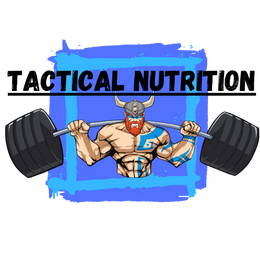Introduction
Emergency Medical Technicians (EMTs) perform some of the most physically demanding and unpredictable work of any first responder. Lifting and carrying patients, maneuvering stretchers through tight spaces, kneeling in awkward positions, and working long shifts all place enormous strain on the body. Over time, these demands can lead to stiffness, pain, and injuries that shorten careers.
While strength and conditioning build the power and endurance EMTs need, mobility is the foundation of durability. A well-structured mobility routine keeps joints healthy, reduces injuries, and ensures EMTs can move efficiently in high-stress situations.
Why Mobility Matters for EMTs
Mobility is more than flexibility. It’s the ability to move joints through their full range of motion with control and strength. For EMTs, this matters because:
-
Awkward lifting positions require hips, knees, and shoulders that can move freely without strain.
-
Carrying patients and gear demands a strong, stable spine supported by mobile surrounding joints.
-
Repetitive movements during long shifts create stiffness that only mobility work can offset.
-
Injury prevention relies on muscles and joints being able to move fluidly under stress.
Without proper mobility, strength and endurance become limited. An EMT may be strong enough to lift a patient but injure their back if their hips and spine can’t move properly.
Common Mobility Challenges for EMTs
The nature of the job creates unique movement challenges:
-
Lower back stiffness from lifting and carrying patients in awkward positions
-
Tight hips and hamstrings from prolonged sitting in ambulances between calls
-
Shoulder and upper back strain from lifting stretchers and equipment
-
Ankle and knee stress from working on uneven terrain or climbing stairs with loads
Addressing these areas through mobility training improves movement efficiency and reduces the risk of strain.
Benefits of a Mobility Routine
Reduced Risk of Injury
By keeping joints moving properly, mobility reduces strain on the spine, shoulders, and knees — the most common injury areas for EMTs.
Improved Performance
Better mobility allows EMTs to lift, carry, and maneuver patients more efficiently. When the body moves as it should, tasks require less energy and cause less fatigue.
Faster Recovery
Mobility routines improve blood flow, reduce stiffness, and accelerate recovery between shifts. This is especially important for EMTs working irregular schedules with little downtime.
Long-Term Durability
A career in emergency response can span decades. Prioritizing mobility protects long-term health, helping EMTs avoid chronic pain and extend their ability to serve.
Key Areas of Focus
Hip Mobility
Healthy hips reduce stress on the lower back during lifting. Tight hips are a common issue for EMTs, especially after long hours of sitting.
Shoulder Mobility
Strong, mobile shoulders protect against strain when lifting stretchers or carrying gear overhead. Mobility here also reduces tension in the neck and upper back.
Thoracic Spine (Upper Back)
A mobile upper back allows EMTs to rotate, bend, and stabilize safely during awkward movements.
Ankles and Knees
Stable, mobile ankles and knees provide a strong foundation for lifting and carrying heavy loads over uneven ground.
Examples of Mobility Work
Mobility doesn’t require hours in the gym. Even 10–15 minutes before or after shifts can make a difference. Examples include:
-
Hip openers like deep lunges with rotation
-
Shoulder dislocates using a band or PVC pipe
-
Thoracic extensions over a foam roller
-
Ankle dorsiflexion drills against a wall
These movements restore range of motion, improve posture, and prepare the body for real-world demands.
Conclusion
For EMTs, mobility is more than a fitness add-on — it’s a critical tool for staying healthy, durable, and effective in the field. By improving joint range of motion, reducing stiffness, and supporting better movement patterns, mobility routines help EMTs perform demanding tasks with less risk of injury.
A strong EMT is a safer EMT, but a mobile EMT is a durable one. Building mobility into regular training ensures the body can handle the unpredictable challenges of the job today — and stay resilient for years to come.




